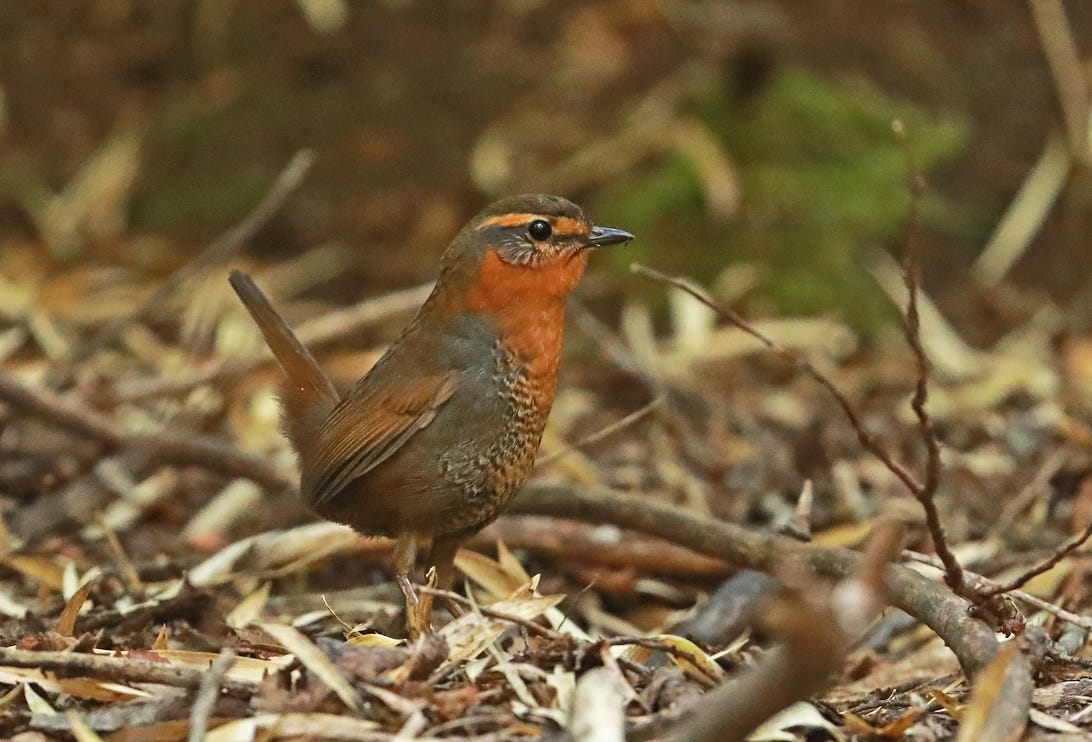
Patagonian birds flock to truffles like these for a delicious gourmet meal.
Matthew E. SmithWhen I'm handed a restaurant menu, the first thing I do is scan for anything that mentions truffles. Truffle risotto, truffle fries, truffle aioli, you name it. Turns out I'm not alone. A few Patagonian birds appear to do the same when surveying the forest for dinner.
Of course, there's already evidence of mammals besides humans enjoying the often nutty, umami fungi. Animals can help keep our pasta-adorning treat alive by dispersing truffle seeds when they drop feces in the wild. And now researchers from the University of Florida have published a study that shows feathery creatures can't stay away from the luxury either.
But the study, published Thursday in the journal Current Biology, says these gastronome chucao tapaculos and black-throated huet-huets feast on truffles that aren't as pungent as the type we know and love. In fact, there are quite a few species of truffles that are completely different from the sort you'll find on Eleven Madison Park's pantry shelves. The ones these birds seek out likely wouldn't appeal to us and resemble brightly colored berries.
According to senior author Matthew E. Smith, an associate professor at the University of Florida's plant pathology department, the discovery of truffles as these avians' favorite food emerged during one of his earlier research projects in Patagonia.
"We are working in the forest, raking the soil and digging up the truffles, and we notice these birds keep following us around and checking out the areas where we had disturbed the soil," he said in a statement.
"Then we find truffles with chunks pecked out of them," he continued. Marcos Caiafa, first author of the study, "even saw a bird eat a truffle right in front of him. All of this led us to ask, are these birds hunting for truffles?" Caiafa, a researcher in the same University of Florida department, had a special front-row seat to a little bird chomping on gourmet cuisine.

Fancy bird No. 1, a chucao tapaculo.
Neil Bowman/Getty ImagesAfter their surprising experience watching the flying creatures searching for and consuming the mushroom-like snack, Caiafa and Smith dug deeper into the mystery. They examined the birds' feces to see if truffle DNA was present.

Fancy bird No. 2, a black throated huet-huet.
Cagan Hakki Sekercioglu/Getty Images"DNA-based diet analysis is exciting because it provides new insights into interactions between organisms that would otherwise be difficult to directly observe," said Michelle Jusino, one of the study's co-authors and a former researcher in Smith's lab.
"Because sampling feces does not negatively impact the target species, I think these methods are invaluable for studying and protecting both common and rare species in the future," Jusino said.
Upon analysis, 42% of chucao tapaculo poop and 38% of huet-huet poop was shown to have concrete DNA evidence of truffles -- the birds had clearly been munching on the colorful, mildly earthy tidbits. Then the team used a fluorescent microscope to check whether the spores found in the feces were still viable. They were. That means the birds help mammals drive truffle propagation by spreading spores when they defecate.

Truffles in the Patagonian forest.
Matthew E. SmithThe researchers also say these fungi have an important role in forest ecosystems: They aid in colonizing tree roots.
"These fungi form mycorrhizas, a relationship whereby the fungus helps the plant take up nutrients in exchange for sugars from the plant," explained Caiafa. Going forward, the team aims to decode why the studied truffles appear aesthetically similar to bright berries. They suspect it's due to an evolutionary adaptation that better attracts the high-end foodie birds.
Pricey gourmet ingredient is a daily snack for these forest birds - CNET
Read More

No comments:
Post a Comment